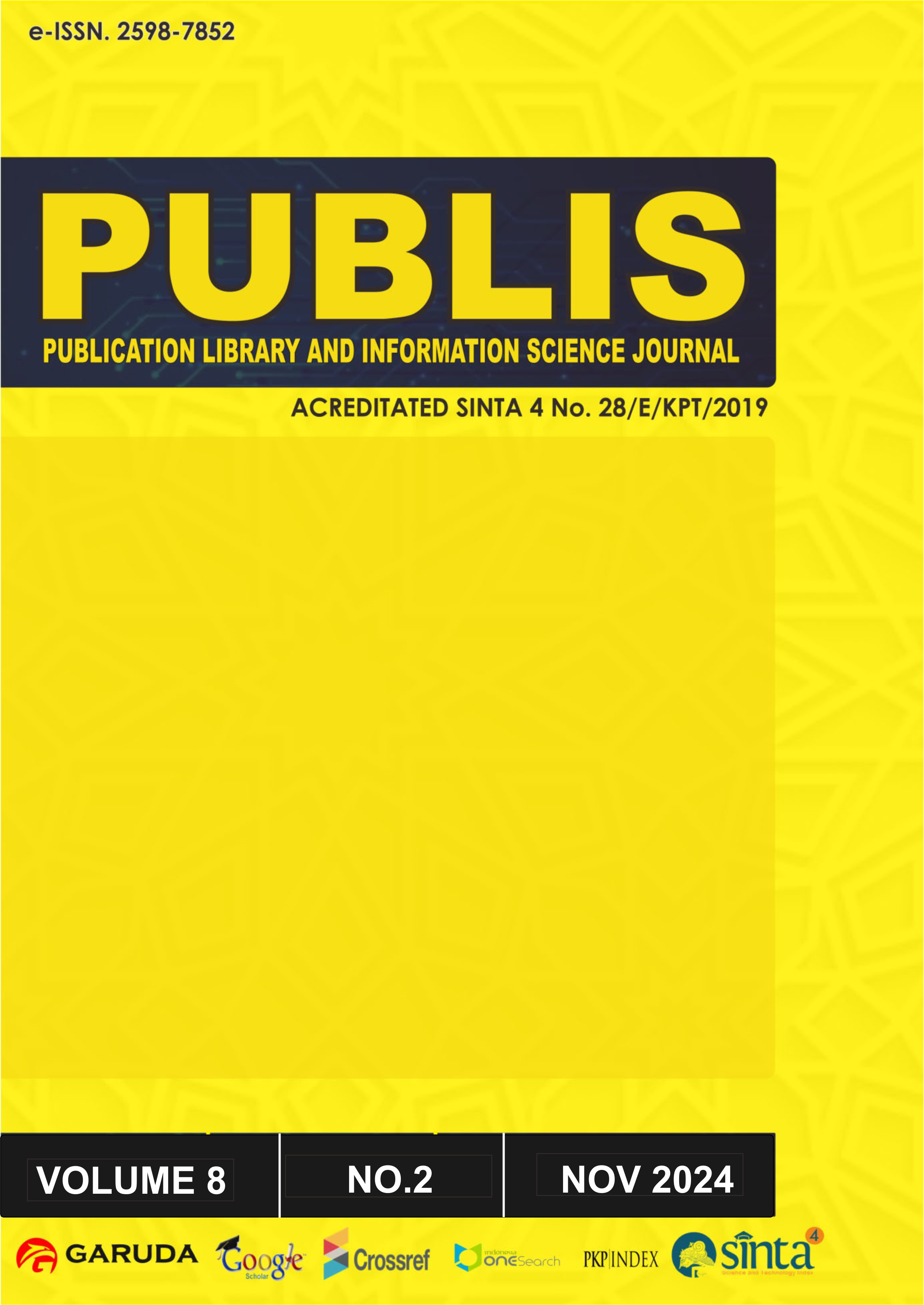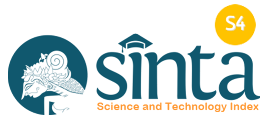PUSTAKAWAN PERPUSTAKAAN PERGURUAN TINGGI ISLAM MENGHADAPI ERA MILENIAL
DOI:
https://doi.org/10.24269/pls.v8i2.8055Abstract The aim of this research is to analyze how librarian of Islamic Higher Education Libraries faces the millennium era. This research uses a qualitative approach, with literature review techniques. A literature review is a survey of scientific articles, books, and other sources relevant to a particular problem, area of research, or theory, and in so doing, provides a description, summary, and evaluation of various works. The results of the research show that human resource management of Islamic higher education libraries facing the millennial era really needs to be done by implementing a sustainable pattern of human resource development regarding knowledge and skills in the fields of libraries and information technology. There are several issues that must be of primary concern, namely: 1) The need for education for library technicians (functional professional skills/librarian assistants), and libraries (functional skills/librarians); 2) Development of the librarian profession by attending seminars, scientific discussions, workshops, writing papers, and the like; 3) Mastery of information technology; 4) Shift in values and work ethic caused by changes in mindset; 5) Making librarians aware of the importance of roles and functions in the information era to realize the achievement of an information society; and 6) Transition of conventional library management to electronic libraries. Therefore, library Human Resources (HR) in the millennial era face various changes and challenges, there are several characteristics that library HR must have, namely: 1) Digital Literacy; 2) Adaptability; 3) Customer Service; 4) Collaboration; 5) Continuous Education; 6) Creativity and Innovation; 7) Understanding Diversity Needs; and 8) Leadership
References
Aidilla Qurotianti. (2018). Strategi Pengembangan Sumber Daya Manusia Dalam Menerapkan Pelayanan Prima Di Perpustakaan Perguruan Tinggi (Studi Kasus Di Perpustakaan Universitas Muhammadiyah Yogyakarta. Jurnal Ikatan Pustakawan Indonesia, 3(1), 1–10. https://doi.org/DOI: https://doi.org/10.1234/jurnal%20ipi.v3i1.11)
Bolderston. A. (2008). Writing an Effective Literature Review. Journal of Medical Imaging and Radiation Sciences Journal, 39, 86–92. https://doi.org/https://doi.org/10.1016/j.jmir.2008.04.009
Demas, s, freeman GT, frischer,B, Oliver, KB, Peterson, C. (2005). Library as place rethinking roles , rethinking space. washington council on library and information resources.
Dubbin, R. (1951). Human relation in administration. prentice hall book companny.
Echlos john M, dan H. shadily. (2000). kamus inggris indonesia An English indonesia dictionary. PT Gramedia.
Nurdin, N., Scheepers, H., & Stockdale, R. (2022). A social system for sustainable local e-government. Journal of Systems and Information Technology, 24(1), 1–31. https://doi.org/doi:10.1108/JSIT-10-2019-0214
R. Nugrahani. (2017). Manajemen Sumber Daya Manusia Perpustakaan Perguruan Tinggi Untuk Mewujudkan Sumber Daya Manusia Yang Berkualitas. Warta Perpustakaan Pusat UNDIP, 10(2). https://ejournal2.undip.ac.id/index.php/wp/article/view/1776
Rhoni Rodin. (2017). Pustakawan Profesional di Era Digital. Suluh Media.
Supiani. (2022). Manajemen Sumber Daya Manusia pada UPT Perpustakaan Universitas Tadulako Palu. Jurnal Integrasi Manajemen Pendidikan (JIMPE), 1(2), 13–25. https://jurnal.uindatokarama.ac.id/index.php/jimpi/index
Wiji Suwarno. (2016). Mengembangkan SDM Perpustakaan Dalam Rangka Menuju World Class University. Libraria, 4(1), 105–126.
Downloads
Additional Files
Published
How to Cite
Issue
Section
License
Licence
This Journal will place Author as Copyright Holder, The non-commercial use of the article will be governed by the Creative Commons Attribution license as currently displayed on Creative Commons Attribution-NonCommercial-ShareAlike 4.0 International License.

Author(s)' Warranties
The author warrants that the article is original, written by stated author(s), has not been published before, contains no unlawful statements, does not infringe the rights of others, is subject to copyright that is vested exclusively in the author and free of any third party rights, and that any necessary written permissions to quote from other sources have been obtained by the author(s).
Plagiarism Notice
PUBLIS Editorial board recognizes that plagiarism is not acceptable and therefore establishes the following policy stating specific actions (penalties) upon identification of plagiarism/similarities in articles submitted for publication in PUBLIS. PUBLIS will use Turnitin's originality checking software as the tool in detecting similarities of texts in article manuscripts and the final version articles ready for publication. A maximum of 30% of similarities is allowed for the submitted papers. Should we find more than 30% of the similarity index, the article will be returned to the author for correction and resubmission.

_baru.png)










